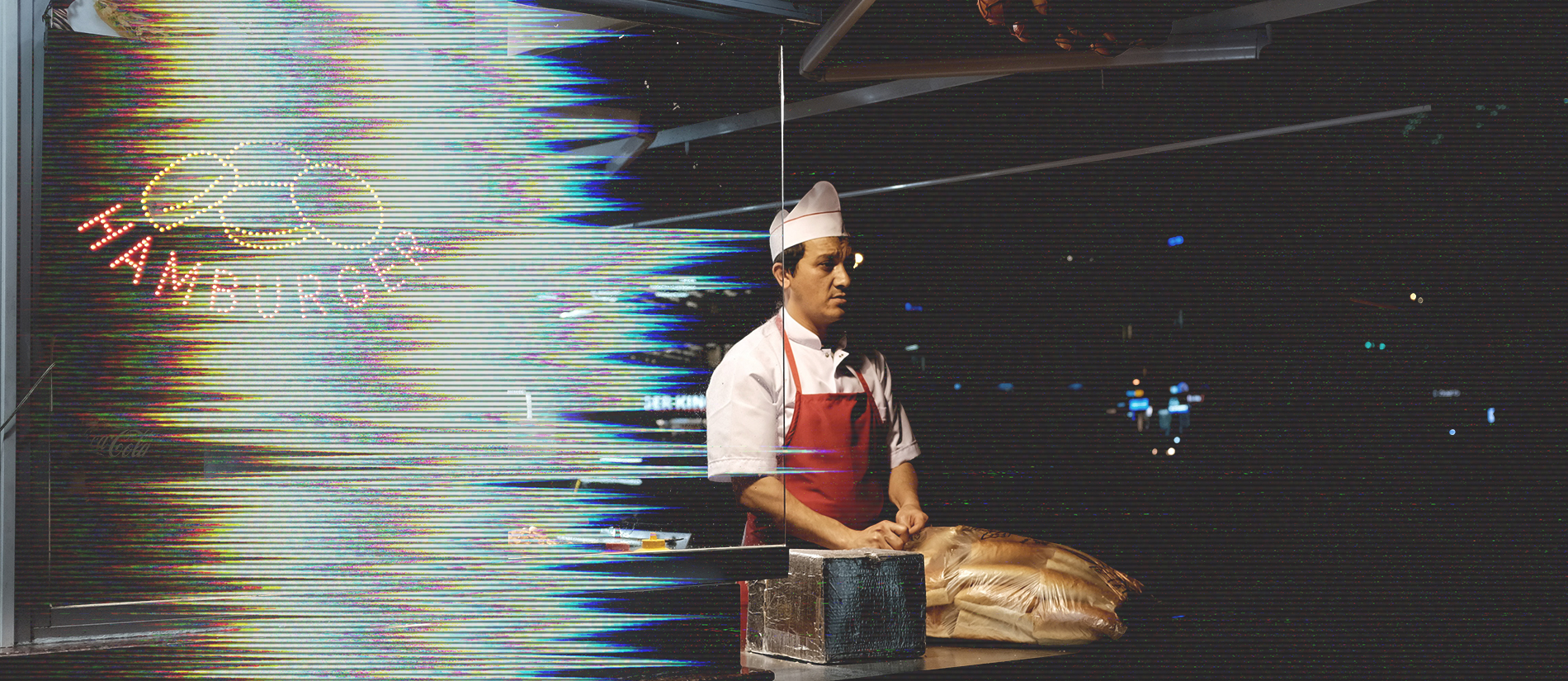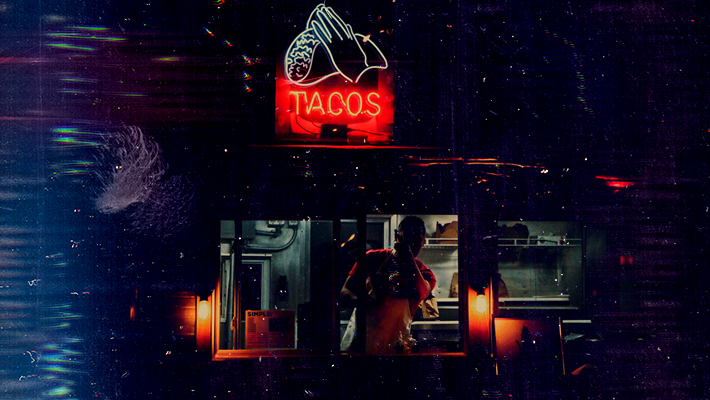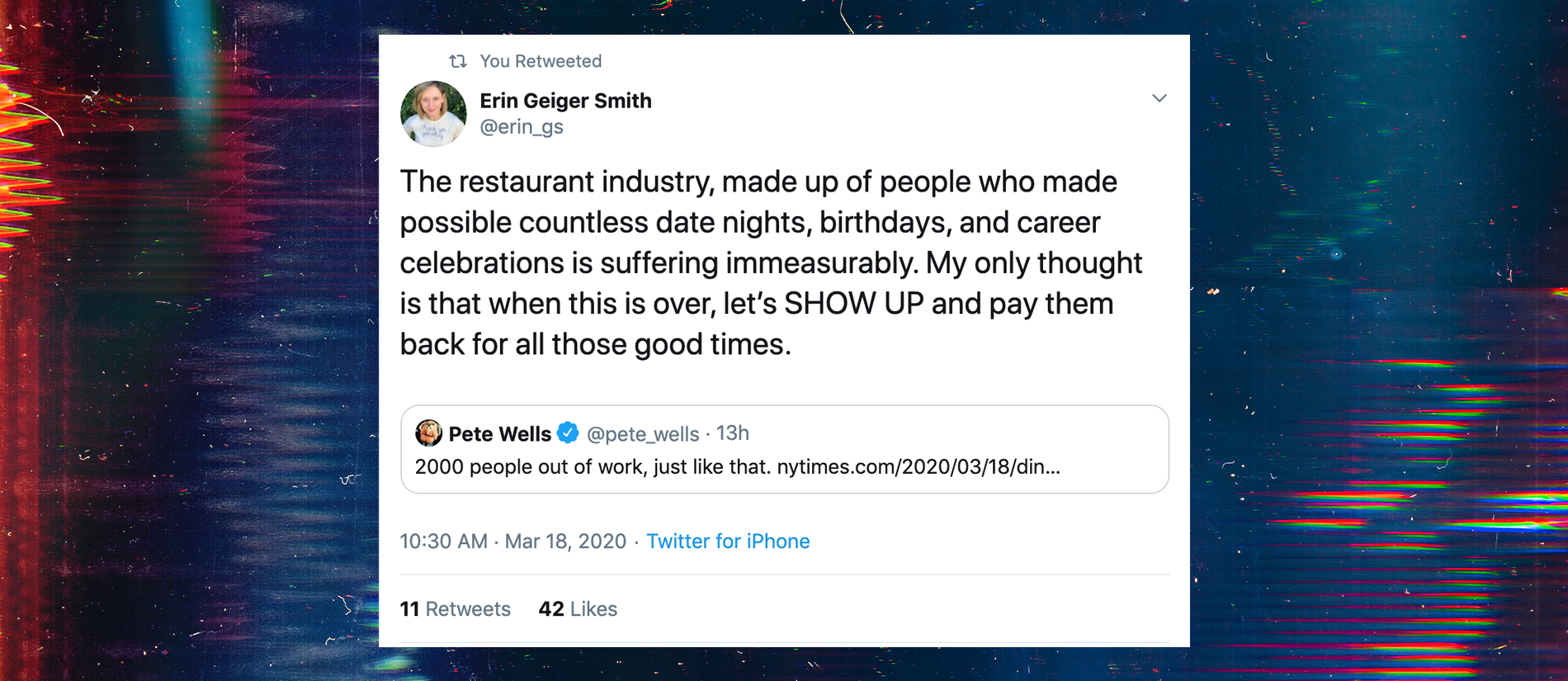As America braces itself for a full-on lockdown, the ripple effects of the coronavirus are reverberating across the country. Requests for cash injections, low- or no-interest loans, and bailouts for a wide range of business sectors — with the airline industry alone seeking more than 50 billion dollars — have already begun. And yet no one in the halls of power seems to be talking specifically about the unique dangers facing independent restaurants.
Sure, President Trump spoke with restaurant CEOs on the phone Tuesday, but his call list included America’s largest franchises. Domino’s, Subway, Chick-fil-A — you know, publicly traded companies making a generic-though-often-serviceable product while refusing to offer paid sick leave. Your neighborhood taco stand wasn’t on the call. Neither was your favorite bao shop. Not even chef-driven farm-to-table restos got the dial-in. These places that make America great by creating community, giving us a sense of history, actually embodying the melting-pot vision we have of ourselves, and thrilling us with their spirit of innovation have received few mentions in the bailout conversation.
Virtually none of America’s independent restaurants are too big to fail. Therefore none of them have a direct line to the White House. But they are the backbone of our culture and the coronavirus pandemic is attacking them in a very specific way. Their workers are vulnerable and their business model is fragile. It’s going to take a concerted effort to save them. The President’s $1 trillion stimulus package, with $300B earmarked for small businesses, will certainly help ease the strain of payroll, rent, and tax burdens, among other costs. But the dining public will also have to rally around these restaurants as much as we possibly can, in whatever ways we can, the second we are able to.
During the quarantine, that means ordering takeout or delivery if we can afford it. After public gathering bans are lifted, it means returning to the places we love with all the friends we missed during our time indoors and ordering so many goddamn soup dumplings that the waiter’s tray bends under the strain.

“Independent restaurant owners are worried we won’t be able to turn the lights on when this is all over,” says Greg Daniels, chef/owner of Harley, in Laguna Beach, California. “It’s that simple, we’re afraid of running out of funds.”
Over the past week, Daniels went from staying open with a skeleton crew to testing a robust takeout menu to trying a more stripped-down takeaway service to closing his doors altogether. The costs were too high, the margins were too low, the staff was milling around with nothing to do. There are only so many times you can tweak the brine recipe, after all.
With no clear understanding of what government relief might look like and when it will arrive, the chef felt he had no choice but to close completely for the time being. And this is an established and well-known culinary voice. He appears at festivals, creates balanced, enticing dishes, and has an interesting story to tell (his restaurant is named for and inspired by his grandfather). Meaning: he runs the sort of place that ought to be able to ride out this storm.
Whether Harley actually can endure the crisis is unclear. The anxiety in Daniels’ voice when I ask, “How close are you to having to close forever?” is palpable.
“I’m shut down in hopes of keeping us in a position where we have some funds on hand to re-open with,” he says. “But I’m not really budgeted to know exactly how much runway we have. That’s a good thing, I guess — because it would probably freak me out even more.”
This is the tenor of most every conversation I’ve had with chefs over the past week. And it reveals something about the restaurant industry itself: it’s spoiled us. As much as we often think of food as expensive, restaurants operate on razor-thin margins. They’re locked in a cage formed by decades-worth of falsely deflated food costs thanks to factory farming and inexpensive migrant labor wedged against our own stubborn refusal to understand that better-sourced food made by people who are paid a living wage should cost a fair bit more. Like any retail business, they’re also downstream victims of the stagnant income growth of the restaurant-going public.
And that’s all during the best of times. In the worst of times — a force majeure like this one — the outlook for independent restaurants is harrowing.
“We rely on credit from our vendors,” says Thinh Nguyen, chef/owner of Another Kind Cafe, a Vietnamese/ Thai restaurant with two locations in Orange County (CA). “Meaning we pay fourteen or thirty days after receiving the product. The rent is the other way around, it’s prepaid. So right now, we’re desperately trying to do enough takeaway business to pay all those bills when they come due.”
Nguyen was born and raised in Vietnam and his recipes reflect his heritage. He refused to sell pho until his wife’s aunt, also Vietnamese, would vouch for its authenticity. His bàhn mí is the perfect mix of traditional Saigon street food and cheffed-up Cali-fusion. I know his food well and I can say with certainty: this isn’t the sort of place that should fail because of this crisis.

When I ask Daniels and Nguyen what they want from the American public their answers surprise me.
“First off, stay home,” Daniels says. “We have to slow the spread of this virus to make sure that the downtime doesn’t stretch to months and months. Buy gift cards for future purchases. Use the restaurants you love that are doing takeout.”
“We hope that customers will support us as much as they can right now,” Nguyen says. “And when we re-open fully, whenever that is, we hope they think of us as one block in the domino chain that will help out the whole economy.”
The idea of independent restaurants as a vital part of our larger economic system is something that the federal government seems to be coming to grips with. Speaking privately, chefs are dubious about how much stimulus money will reach them — since most talk from Washington has been about industries that ought to have built some sort of crisis firewall for themselves. (Spend a few minutes with the American Airlines earnings report from 2019, witness their 19% increase in year-over-year profits, how much of their 1.7B in net income went out to shareholders via dividends and stock buybacks, and try not to be furious that this company and those like them are somehow in line for federal money.)
Though the small business allotment of Trump’s package is yet unclear, the viral “Save America’s Restaurants” petition on Change.org (orchestrated by Hugh Acheson, Steph Izard, Scot Conant, Reem Assil, Preeti Mistry, and other preeminent chefs) offers a good jumping-off point for how legislation could help independent restaurants:
We humbly implore you to please consider:
Providing emergency employment benefits to all hourly and salaried workers who have been laid off or suffered or lost their pay for the length of this crisis.
Waiving payroll tax.
Endorsing rent and loan abatement for workers.
Working with state liquor authorities to enable restaurants offering take out and delivery to also sell/deliver beer, wine and cocktails by the bottle.
Waving zoning or permit restrictions to allow restaurants to temporarily use their spaces as boutique food and beverage markets, offering an alternative to overcrowded supermarkets and by extension continuing to pay their staff and support their farms and purveyors.
To press Trump and Congress to make sure the stimulus reaches restaurants and their staffs, we should all be calling our congresspeople (Eater even offered a script for doing so). On the local level, San Francisco Mayor London Breed has already funded an additional $10 million in paid sick leave. Hopefully, other cities follow suit. Sadly for many restaurants, city officials might also have to make it easier for failed properties to break their leases.
Instead of waiting for checks to arrive, chefs and owners whose businesses feel financially sound are taking matters into their own hands for the sake of their teams.
“In just a few days, we’ve turned our restaurant into a takeaway,” says Niccolo Anguis, co-owner of the lauded Cesarina, in San Diego. “All of the eventual profits will be divided among staff, and they’ll also be paid their hourly wages. Obviously, we told them to apply for unemployment, too — because of the drastic hour reduction they’re going to face. But most of them applied four days ago and haven’t seen approvals as of yet. So we’re trying to give them something to live off until the government jumps in to support.”

VIA TWITTER / @/ERIN_GS
Via https://twitter.com/erin_gs/status/1240329769922764800 Twitter / @/erin_gs
Clearly, there’s much work to be done. Some restaurants will die. At this point, industry-wide contraction is inevitable (as Wall Street got hyped on food in the mid-2000s and pictures of meals became America’s pastime, the industry overexpanded). And urging people to spend money on food in such trying times is a precarious prospect. Most of what was once called the middle class is struggling right now.
Coronavirus has engaged us in war fought on a thousand fronts all at once. We’ll have to do our best and hope that is enough. But if we like this part of American life — this habit of coming together in public spaces to share in an experience that is essential to being human, gives us sensory pleasure, and can, at its best, teach us something about where we’re from and where we’re headed — then we will need to fight for it. Both via political channels and in our spending habits.
“The first months after the quarantine will be vital,” Anguis says. “If restaurants can manage to get through that — with help from their communities — then everything else will get easier.”







